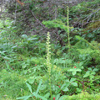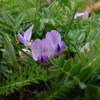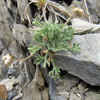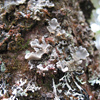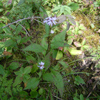September 27, 2013
Nine Rare Species Added Under Province’s Endangered Species Act
In an effort to conserve and protect rare plants and lichen, the Provincial Government has added nine species under the Endangered Species Act as either endangered or threatened, the Honourable Tom Hedderson, Minister of Environment and Conversation, announced today.
One lichen and eight rare plants are being listed following assessments by the Species Status Advisory Committee and the Committee on the Status of Endangered Wildlife in Canada.
“Species listed as endangered are in imminent risk of extinction and those listed as threatened are species likely to become endangered if nothing is done to reverse the factors limiting their survival,” said Minister Hedderson. “I’d like to acknowledge the dedication of the committees involved in this process who were instrumental in ensuring the protection of the identified rare species as we conserve biodiversity for future generations.”
The Graceful Felt Lichen/ Vole Ears (Erioderma mollissimum), Alaska Rein Orchid (Platanthera foetida), Cutleaf Fleabane (Erigeron compositus), Oval-leaved Creeping Spearwort (Ranunculus flammula var. ovalis), Rock Dwelling Sedge (Carex petricosa var. misandroides), Feathery False Solomon’s Seal (Maianthemum racemosum subsp. racemosum), Lindley’s Aster (Symphyotrichum ciliolatum), Vreeland’s Striped Coralroot (Corallorhiza striata var. vreelandii), and Bodin's Milkvetch (Astragalus bodinii), have been given protection under the Endangered Species Act.
Currently, the total number of species, subspecies and populations listed under the province’s Endangered Species Act is 44 including 21 endangered, 10 threatened and 13 vulnerable species.
The attached backgrounder outlines the species added under the Endangered Species Act.
- 30 -
Photos:
Media contact:
Deborah Thomas
Director of Communications
Department of Environment and Conservation
709-729-2575, 728-8092
deborahthomas@gov.nl.ca
BACKGROUNDER
Listing of Species Added
Graceful Felt Lichen/ Vole Ears (Erioderma mollissimum) is a leafy lichen that is grey in colour when dry and turns brown when wet. It forms round patches less than 10 cm in diameter. Felt-like fine hair covers the upper surface and the edges of the lobes are thick curled. Its name reflects the fact that the lobes look similar to ears of a small mammal called a vole. The Graceful Felt Lichen grows on barks of trees in humid habitats containing a mosaic of wetlands and forests. It is known to two localities on the Avalon Peninsula: Hall’s Gullies and Southeast Placentia. In Newfoundland and Labrador, only 20 mature individuals have been found on 10 trees.
Alaska Rein Orchid (Platanthera foetida) is a very slender, white-flowered, perennial orchid. This orchid can be found in damp or dry, moss-dominated, open areas of coniferous and mixed evergreen forests. This species has been recorded in other provinces and the United States. It is known in Newfoundland and Labrador from only one small population near Port au Choix.
Bodin's Milkvetch (Astragalus bodinii) is a small, freely-branching, carpet forming plant in the pea family. It has showy, pinkish-blue flowers and divided leaves. In Newfoundland and Labrador, the flowers open in July and the plants set their seeds in the fall. Bodin’s Milkvetch can be found in limestone-based, coarse sand on coastal heath dominated by dwarf willows and Beach Pea. This species has been recorded in several provinces as well as the United States. It is known in Newfoundland and Labrador from only one small population near Cook’s Harbour on the Great Northern Peninsula.
Cutleaf Fleabane (Erigeron compositus) is a semi-woody perennial with a tap root. It has tansy-like flower heads. In Newfoundland and Labrador, the flowers open from early to late June. The Cutleaf Fleabane is found in dry, gravelly limestone substrate associated with scree. This species has been recorded in eight provinces and territories, as well as the United States, Greenland and Russia. It is known in Newfoundland and Labrador in only one small population along the lower Humber River, near Corner Brook.
Oval-leaved Creeping Spearwort (Ranunculus flammula var. ovalis) is a small, amphibious, trailing buttercup. It has small yellow flowers that open in early July. It has unusually short, broad, thick leaves which narrow at the base and are pointed at the tips. The Oval-leaved Creeping Spearwort is found in intermittent pools on exposed limestone barrens. In Newfoundland and Labrador, it is currently found in two locations on the Great Northern Peninsula, at Port au Choix and Point Riche. It is also found in all other Canadian provinces, the Northwest Territories, the United States, and Iceland.
Feathery False Solomon's Seal (Maianthemum racemosum subsp. racemosum) is a lily-like plant that closely resembles the garden variety Solomon’s Seal. It produces small, white, star-like flowers in a terminal cluster, followed by fruit that turn a deep translucent red at maturity. This plant is found in deciduous woodlands, including alder thickets. It is known from only two locations in Newfoundland and Labrador and is also found in other Canadian provinces.
Lindley’s Aster (Symphyotrichum ciliolatum) is a perennial plant that is usually 30 to 100 cm tall. It has purple-blue flowers with yellow centers that become reddish over the flowering period. Its leaves are thin, serrated and, heart-shaped. In Newfoundland and Labrador, it is only found in areas around Stephenville and the Port-au-Port Peninsula. This species is also considered rare in Nova Scotia.
Rock Dwelling Sedge (Carex petricosa var. misandroides) is found in limestone habitats including cliffs, barrens and slopes. Worldwide, this species is known only in Newfoundland and Labrador and Quebec. This plant is compact to slender in shape and grows as a loosely-tufted mound.
Vreeland's Striped Coralroot (Corallorhiza striata var. vreelandii) is a perennial orchid that is yellowish in colour, whose flowers are yellow with magenta stripes. This large (10-44 cm tall) orchid is limited to two locations in Newfoundland and Labrador. This species is limited to Quebec and insular Newfoundland in its Canadian distribution. This beautiful plant is sought after by both photographers and orchid enthusiasts, who may cause accidental trampling or may collect the plants. Vreeland’s Striped Coralroot cannot perform photosynthesis and so must depend on surrounding plants to survive.
2013 09 27 12:15 p.m.
